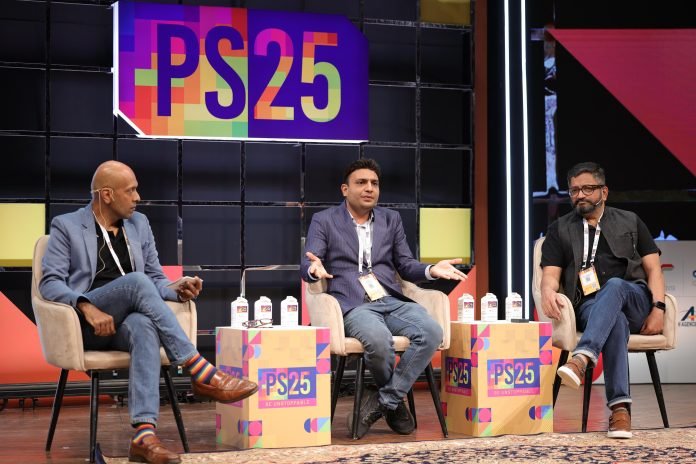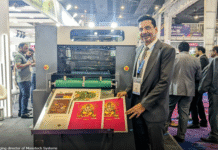Milap Shah, founder of Mumbai-based PrintStop, Shiva Viswanathan, co-founder and CMO at Catenate, and Manu Choudhury, director at CDC Printers explored the transformative role of AI in the printing industry during Print Summit 2025. They discussed AI’s rapid evolution and its growing influence across industries, offering insights and actionable advice for entrepreneurs keen to stay ahead.
Manu Choudhury detailed a ground-breaking AI-driven workflow. By uploading a purchase order (PO), AI can instantly determine whether it is a new or existing order, generate job cards, verify stock availability, schedule production, and inform customers about delivery timelines. This streamlined process, executed in seconds, highlights the pace of change AI is driving in operational efficiency.
A major takeaway was the need to rethink enterprise resource planning (ERP) systems. Current systems demand excessive manual inputs and redundancy, which AI can eliminate. Chaudhury urged organizations to demand simplified, decision-free workflows from ERP suppliers. Integrating voice and regional language capabilities was emphasized as a key enabler, particularly for frontline employees.
Addressing job loss concerns
Vishwanathan dispelled fears about AI rendering jobs obsolete. While AI automates repetitive tasks, it opens opportunities in areas such as design, where it acts as a collaborative tool, fostering creativity and efficiency. Drawing parallels with past disruptions like photoshop and satellite TV, he emphasized that new technologies historically lead to industry evolution rather than extinction.
AI as a leveller for small businesses
AI presents smaller firms with a unique leveling opportunity. Unlike larger corporations burdened by legacy systems and extensive hierarchies, smaller companies can swiftly adopt AI to achieve comparable results. Chaudhury likened AI’s potential to the rise of pickleball: it enables newcomers to perform at a level comparable to seasoned players in established domains.
Innovative AI tools for the printing sector
Vishwanathan highlighted tools such as Esko Studio, an Illustrator plug-in simplifying production-ready outputs. Chaudhury shared the success of SMC Engine, which allows customers to experiment with pricing and specifications in real-time, enhancing transparency and decision-making.
The future of AI in creativity
AI’s impact on creativity is profound but complementary. While AI cannot produce market-ready outputs independently, it provides a starting point by generating ideas and exploring design possibilities. Vishwanathan noted that AI tools, such as ChatGPT, are invaluable for ideation and structuring, serving as a catalyst rather than a replacement for human creativity.
Practical advice for businesses
To embrace AI, businesses must shift their mindset. Start small by identifying repetitive tasks that AI can streamline. Invest in understanding the technology’s capabilities, and leverage tools that align with your business needs. Manu shared his experience of achieving remarkable results with minimal resources, highlighting that AI’s accessibility enables significant innovation even in smaller teams.
The overarching message from Print Summit 2025 was clear: AI is not just the future—it is the present. Entrepreneurs and organizations must adopt a proactive approach, shedding outdated practices and embracing AI to remain competitive in an ever-evolving landscape.

















